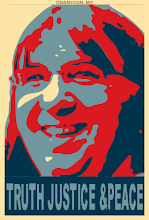A Life of Stone

I just finished The Stone Diaries by Carol Shields, the next book for my reading group, which meets this week.
The story, a series of vignettes or diaries, provide snippets of the life of Daisy Goodwill, from her birth in 1905 to her death, sometime in the 1990s. The chapters follow different stages of her life, from her birth, childhood, marriage and old age and is presented as a combination autobiography and biography.
The manner in which the story is told, as well as a detailed family tree and an assortment of family photos makes you wonder if the tale is true. In fact, at one point, I found myself looking to see if the book was fiction or non-fiction. The inside cover confirmed that it was a novel.
There is much to enjoy in the book and its simple story of Daisy and her life. However, the life of Daisy, which starts upon the death of her mother during her birth, is not a happy one. The characters that intersect with her, friend and family alike, are all complex in their ordinariness. However, to one degree or another, each lives a life that is unfulfilled and alone, as does Daisy. From her father, who was in love with her mother Mercy, who never truly felt anything for him, to the next door neighbor Clarentine, who raised Daisy after she left her husband. From her first husband who died on their honeymoon, who was never mourned or mentioned again by Daisy to Clarentine's son Barker, who loved her from childhood, but wasn't able to express his feelings, although they eventually married and had a family.
Daisy's life was typical for a woman of her time, but was permeated by her loss of her mother at birth, followed by an eleven year separation from her father while she was raised by Clarentine. After she was reunited with her father, a stonecutter (who built a stone monument to her mother that became famous), they moved from Canada to the States. They had a normal life, but she was never especially close with her father. Daisy had 3 children, who were somewhat disappointing and distant from her (both literally and figuratively). She managed to make a decent life, with joys and highpoints, but reflected at her death that she was like the stones that surrounded her life.
In addition to the oppressive sorrow that she bore for most of her life, including a period of deep depression that paralyzed her, the biggest flaw in the book for me was the continual narration shifts from one point of view to another -- sometimes in the same paragraph, which detracted from the story at times. It wasn't that I couldn't follow the story line due to the changing points of view, but I sometimes felt that the shift was accidental rather than an intentional literary device of the author. I like the diary format and there were parts where the narration by other characters was very good, such as the reflection by friends and family as to the cause of Daisy's depression.
Overall, my view of the book was mixed. It was well written (narrative changes aside), easy to read and Daisy's story was interesting, but I certainly wouldn't call it one of my favorite books. But what do I know? After all, the book won the Pulitzer Prize, the National Book Critics Circle Award and several Canadian book awards, and it received a glowing NYTimes review by Jay Parini (a Scranton native), Men and Women, Forever Misaligned.

No comments:
Post a Comment